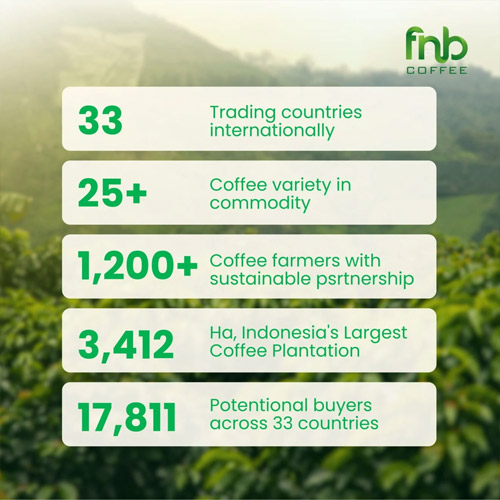Coffee, the beloved beverage that fuels billions of people around the world each day, has an origin story that’s as rich and fascinating as the drink itself. Its history spans centuries and continents, moving from ancient Ethiopia to the bustling cafés of modern cities. But when was coffee invented, and how did it evolve into the global sensation we know today?
In this article, FnB Coffee will explore the intriguing journey of coffee from its discovery to its place in modern culture, answering the key question: when was coffee invented?
The Beginnings of Coffee: A Tale from Ethiopia
The origin story of coffee is steeped in legend, and it all begins in Ethiopia. It is said that coffee was discovered in the 9th century, though evidence of its consumption dates back even further. The most popular legend about the discovery of coffee centers around a young goat herder named Kaldi.
Kaldi, according to the legend, noticed that his goats became unusually energetic after eating the red berries from a particular shrub. Curious about this phenomenon, Kaldi tried the berries himself and experienced a burst of energy. He shared his discovery with a local monk, who decided to experiment with the berries.
The monk brewed a drink from the berries, and soon, other monks in the area began using it to stay awake during long prayer sessions. This drink, made from the berries of the coffee plant, is believed to be one of the earliest forms of coffee.
The story of Kaldi and the monks is a charming anecdote, but the exact origins of coffee in Ethiopia are still debated. However, it’s clear that Ethiopia holds a significant place in the story of coffee. The coffee plant, Coffea arabica, is native to the highlands of Ethiopia, where the first known uses of coffee as a stimulant occurred.
Read also: Arabica Coffee History, How Ethiopian Beans Conquered the World
From Ethiopia to the Arabian Peninsula
While the legend of Kaldi and his goats is fun to imagine, historical evidence suggests that coffee likely moved from Ethiopia to the Arabian Peninsula sometime in the 15th century. This is where coffee began to transform into the beverage we know today.
In Yemen, which was part of the Arabian Peninsula, coffee cultivation and trade flourished. Sufi monks in Yemen began using coffee to stay awake during their nighttime religious rituals, and the drink gradually became popular among the local population.
Coffee houses, known as qahveh khaneh, began appearing in the Middle East by the early 16th century. These establishments became important social hubs where people gathered to discuss politics, literature, and other matters. Coffeehouses soon spread to other parts of the Ottoman Empire, Persia, and beyond, cementing coffee’s place in the culture of the region.
The coffee trade in Yemen played a crucial role in making coffee known across the Arabian Peninsula. By the time it reached the city of Mecca in the early 16th century, coffee was becoming an integral part of the social fabric.
Pilgrims from across the Muslim world who visited Mecca brought the drink back to their home countries, leading to the global spread of coffee. This marked a key moment in the history of coffee and answered one aspect of the question: when was coffee invented? Though it had been discovered much earlier, coffee’s widespread use as a popular beverage began in the Middle Ages, roughly in the 15th century.
Coffee in the Ottoman Empire and Beyond

As coffee culture continued to thrive in the Middle East, it eventually reached the Ottoman Empire. In the 16th century, the Ottoman Sultan, Suleiman the Magnificent, became an ardent supporter of coffee. He established coffeehouses in Istanbul, where coffee became a drink enjoyed by people of all classes.
The Ottoman Empire played a significant role in shaping the coffee culture we know today. For example, it was during this period that coffee preparation techniques were refined, and the first use of roasted coffee beans began.
As the Ottoman Empire expanded its reach, coffee spread further into Europe. The Venetians were among the first Europeans to encounter coffee in the early 17th century when they began trading with the Ottoman Empire.
The first European coffeehouse opened in Venice in 1645, but it was in England that coffee culture truly took off. The first coffeehouse in England opened in London in 1652, and by the end of the 17th century, there were more than 3,000 coffeehouses throughout the country.
Coffee’s Arrival in Europe: A New Social Experience
Coffeehouses in Europe quickly became popular centers for intellectual discussion, much like the ones in the Middle East. In England, these establishments became known as “penny universities” because for the price of a cup of coffee, you could engage in stimulating conversation and debate on a wide range of topics.
The Dutch were instrumental in introducing coffee to Europe on a larger scale. They were the first to successfully cultivate coffee plants outside of Arabia in the 1600s, setting up plantations in Java, which is now part of Indonesia.
From there, coffee spread throughout the European colonies. Coffee cultivation began in the Caribbean, Central America, and South America, particularly in Brazil, where the country would go on to become the largest producer of coffee in the world.
Coffee in the New World: The Rise of Coffee Plantations

When the Dutch and French began establishing coffee plantations in the Caribbean and South America, coffee became a major part of the colonial economy. The coffee trade boomed in the 18th and 19th centuries, and the rise of coffee plantations significantly impacted the economies and societies of many countries.
Brazil, in particular, became synonymous with coffee production. The country’s climate and geography proved ideal for growing coffee, and by the 19th century, Brazil had become the world’s leading coffee producer. Other countries in Latin America, such as Colombia, Guatemala, and Costa Rica, also established coffee plantations that would contribute to the global supply.
The cultivation of coffee in the New World was also tied to the exploitation of enslaved peoples, particularly in the Caribbean and Brazil. The harsh working conditions on coffee plantations led to significant social and economic changes in the Americas.
Coffee’s Influence on Global Trade and Economics
By the 19th century, coffee had become a major global commodity, and its importance in world trade was undeniable. The establishment of coffee plantations in various parts of the world ensured that the beverage was accessible to people from different cultures and backgrounds. Coffee became a staple in many countries, and its economic impact was substantial.
The establishment of global coffee markets, such as the New York Coffee Exchange, and the rise of major coffee companies further contributed to the drink’s spread. As a result, coffee became not just a cultural symbol, but also a major player in the global economy.
Coffee in the Modern Era
In the 20th century, coffee underwent significant changes. The invention of instant coffee in the early 1900s made coffee even more accessible to people around the world. During World War II, instant coffee became a staple for soldiers, and its convenience helped solidify its place in everyday life.
In the latter half of the 20th century, coffee culture saw a renaissance with the rise of specialty coffee shops and the global popularity of espresso-based drinks, like cappuccinos and lattes. The emergence of coffeehouse chains like Starbucks, which was founded in Seattle in 1971, helped popularize high-quality coffee in a way that was accessible to a global audience.
Read also: The History and Process of Civet Coffee Indonesia
The Global Coffee Culture Today
Today, coffee is enjoyed in nearly every corner of the world, from street vendors in Southeast Asia to the coffee shops in Paris and New York. Coffee culture has evolved into a global phenomenon, with millions of people sharing their passion for the drink through specialty cafes, roasts, and brewing methods.
The specialty coffee industry has also seen a surge in recent years, with an increased focus on ethically sourced beans, fair trade practices, and sustainability in the coffee production process. Modern coffee drinkers are not just concerned with the taste of their beverage, but also the environmental and social impacts of their coffee choices.
Conclusion: The Timeless Appeal of Coffee
So, when was coffee invented? The answer lies in a history that spans centuries, starting in Ethiopia around the 9th century and spreading to the Arabian Peninsula by the 15th century. Coffee journeyed through Europe and the Americas, evolving into a global commodity and social tradition.
From its humble beginnings to becoming a worldwide cultural phenomenon, coffee’s history is rich and enduring. As you enjoy your next cup, remember that it connects you to a tradition that has been growing for over a thousand years, making each sip a part of a timeless story.




























 Arabic
Arabic Chinese (Simplified)
Chinese (Simplified) Dutch
Dutch English
English French
French German
German Indonesian
Indonesian Italian
Italian Japanese
Japanese Portuguese
Portuguese Russian
Russian Spanish
Spanish